How to collect ceramic dogs (and cats)
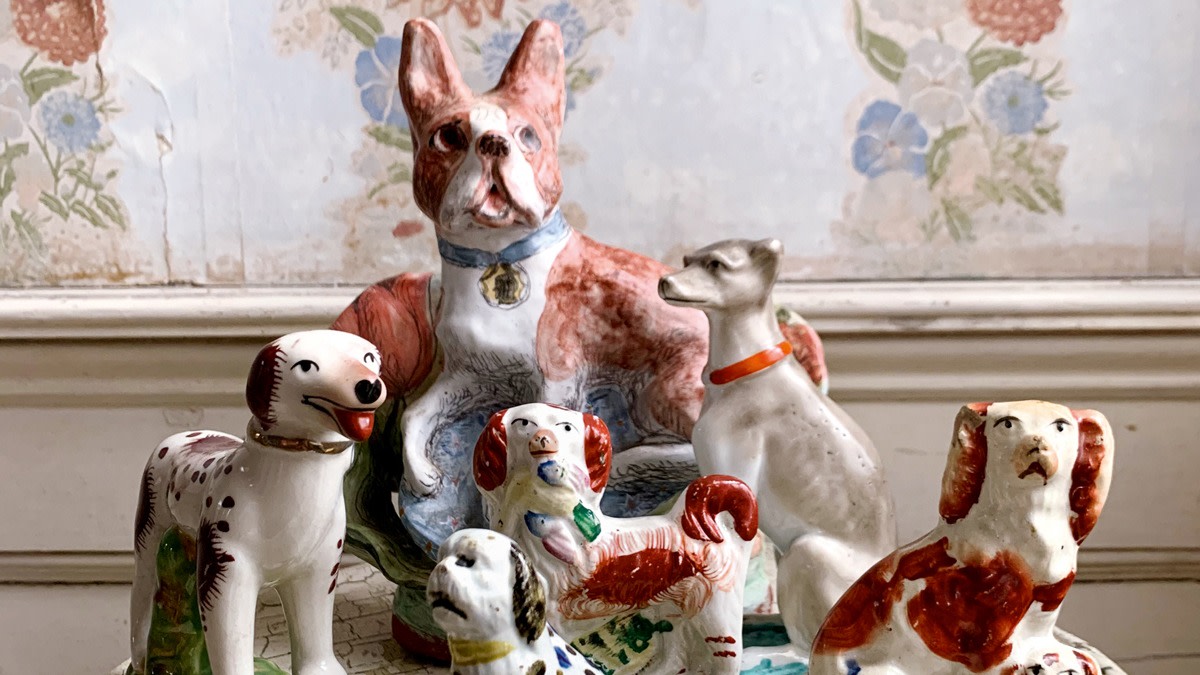
Roula Khalaf, Editor of the FT, selects her favourite stories in this weekly newsletter.
Antiques dealer John Howard is somewhat surprised to get a call about Staffordshire ceramic dogs. “I used to sell hundreds of them a year, but at the minute, they are dead off-fashion,” says the specialist in 18th- and 19th-century English pottery. “I’ve sold things like this to Elton John, and some people really like them in a whimsical way, but Victoriana is not a look that’s in vogue.”
But while word of the growing new-gen appreciation for chintz may not have reached Howard in Oxfordshire, it was the talk of New York recently when Sotheby’s dedicated a sale to the collection of Mario Buatta. Dubbed “the prince of chintz”, the late decorator was known for his full-on maximalist style, and the auction fetched $7.6m – more than two and a half times its estimate. Amid the 922 eclectic lots were rococo wall brackets, embroidered cushions, tulip-shaped “ice cups” – and lots of dogs, as oil paintings and ceramics. A pair of late-19th-century pottery poodles, for instance, sold for $3,250 over a $400-$600 estimate.

Such kitsch ornaments are popping up on many a stylish mantelpiece. In Frome, Somerset, antiques dealer and interior designer Jack Laver Brister (aka Tradchap) includes Staffordshire spaniels and turquoise-blue Chinese foo dogs in the “layered, lived-in look” of his Georgian townhouse. Architect and designer Ben Pentreath is similarly smitten: “I have a pair in nearly every room. The spaniels in the drawing room of our Dorset home are some of the largest I’ve seen.” Both Brister and Pentreath source their pieces at junk shops and antiques stalls, where these mass-produced figures are plentiful.
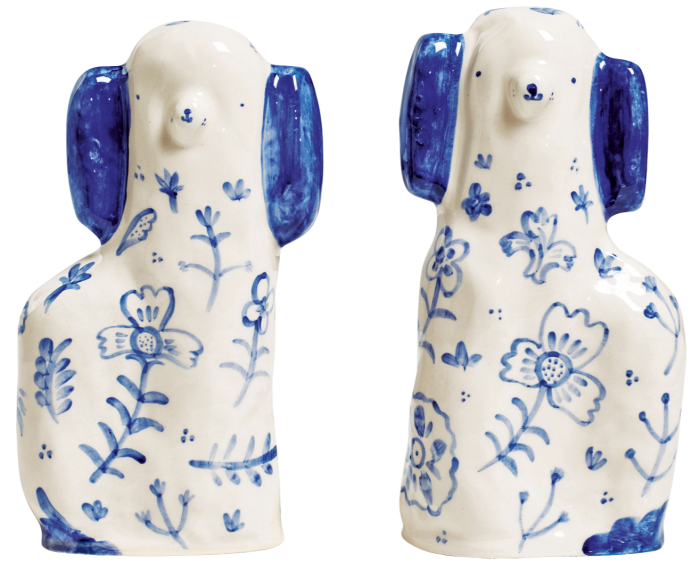
“You can buy simple ones for about £200, but I have a pre-Victorian pair in stock for £5,000,” says Howard. “The ones made before 1860 were less mass- produced. Look for a front leg that is separately moulded. And a pink nose. I have a customer who has over 300 pairs, but he only buys the ones with pink noses. They tend to be better quality than the ones with black noses. You really need to look at the face. It’s like looking at a bloke. You think, ‘Would I like that staring back at me?’”
Millennial maximalist Luke Edward Hall found a pair of faces he liked the look of in Woodstock shop Antiques at Heritage, where Howard sells his wares. The spaniels now preside over his Cotswolds dining room. “They can work very well with more contemporary objects. I’m designing a mirror to go above the mantelpiece, which will have a thick cobalt-blue glass frame. The tension created between old and new things is what I like in a room.”
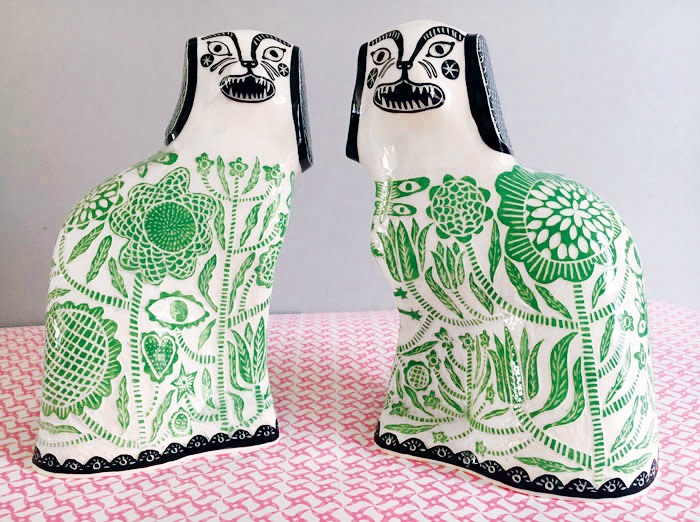
This tension is also being explored by several designer-makers. Pentreath admires “the rather rare, limited-edition motto dogs by Rob Ryan”. Known for his paper-cut illustrations, Ryan made his first set of Staffies about 15 years ago, fusing the traditional shape with painterly decoration and his signature texts. “I’ve just started on my first batch of dogs in several years,” he says of a new design, 30 of which will launch this spring.
Newcastle-based illustrator and ceramicist Alex Sickling has also come up with her own version of Staffordshire dogs, simplifying the shape and decoration to create charmingly naïve blue-and-white objects. And in Devon, Vicky Lindo gives her earthenware pottery dogs added intricacy with sgraffito markings, scratching through the clay to reveal a contrasting colour.
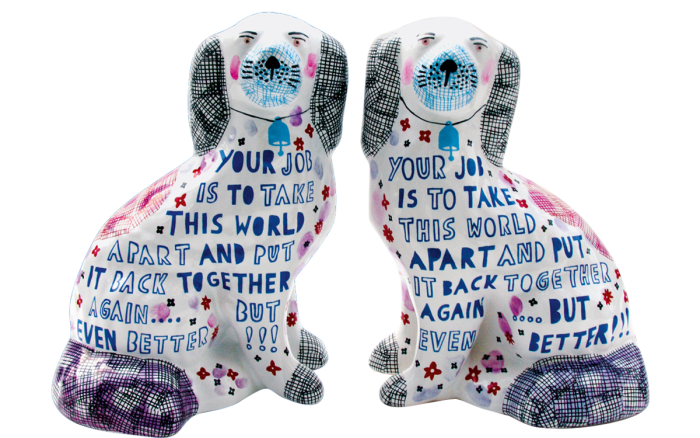
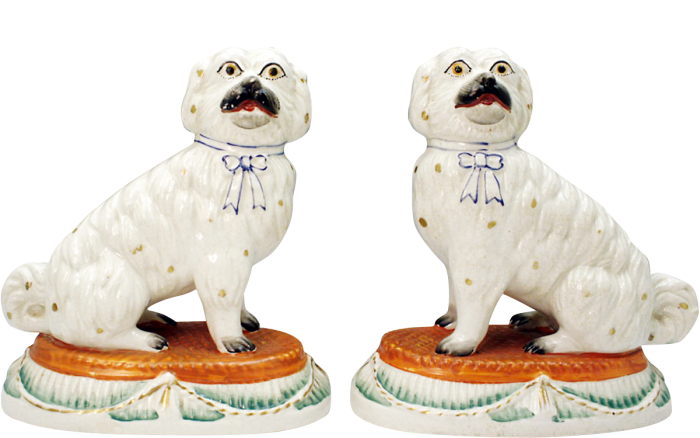
“I have a huge pair of spaniels that peer down at me and feed into my work,” says Lindo. “I’m always thinking about the past, layering old and new ideas.” This fusion of historical techniques and influences in an utterly unique and contemporary way is what earned Lindo the top prize at the 2019 British Ceramics Biennial.
Perhaps even more appealing than Lindo’s dogs, however, are her cats – stately creatures covered in rich illustration. Cats also feature in the collection of John Derian. “I especially like the more primitive early ceramic animals,” says the découpage artist, whose New York stores stock such antiques. “They tend to be handpainted, showing the personality of the artist.”
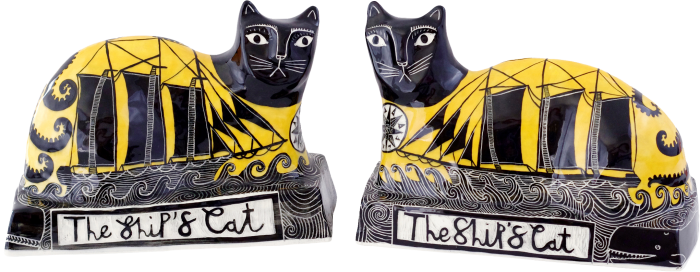
In fact, animals of all kinds get a look in. Pentreath treasures a bull by Arnold Machin for Wedgwood, while Hall is on the hunt for “some zebras and a leopard”. He could be in for some stiff competition: a c1815 Staffordshire leopard figure in the Buatta sale was hammered down at $6,250.
But what’s the trick to styling a ceramic menagerie on the mantelpiece? Pentreath advises: “At least two pairs of candlesticks, something with height, something low. Symmetry works – and for the true country- house look, plenty of clutter.”
WHERE TO BUY
Alex Sickling, thenewcraftsmen.com. John Derian, johnderian.com. John Howard, antiquepottery.co.uk. Rob Ryan, robryanstudio.com. Sotheby’s, sothebys.com. Stair, Hudson, NY; Ceramics from the Collection of Mario Buatta, 23 April (stairgalleries.com). Vicky Lindo, alvestonfineart.com.
WHAT TO READ
A-Z of Staffordshire Dogs by Clive Mason Pope
Comments